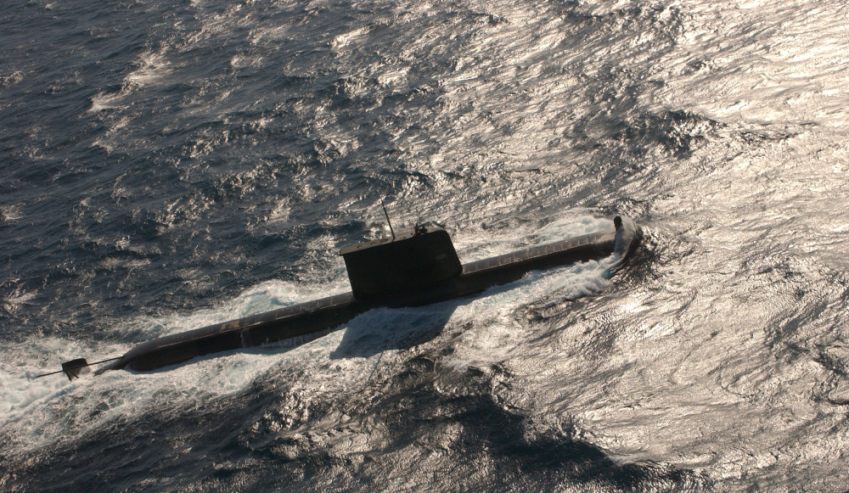As the timeline for the delivery of Australia’s future submarines continues to balloon, Saab is presenting a solution to the questions that have been raised about extending the life and combat capability of the ageing Collins Class fleet.
To continue reading the rest of this article, please log in.
Create free account to get unlimited news articles and more!
Growing concerns about the delivery time frame and capability of Australia's future submarine fleet, combined with the ageing and diminishing capability of the Navy's Collins Class submarines has served to highlight the need to provide a credible stop-gap measure to resolve any real or perceived tactical and strategic shortfalls in the nation's existing and future submarines.
While Australia's controversial Collins Class submarines have long been maligned by the public, politicians and media, recent improvements to reliability, performance and overall capability have sought to address the issues presented by the ageing platforms.
Meanwhile, recent announcements made by Saab regarding the successful upgrade and mid-life modification of the HSwMS Gotland of the Swedish Navy has provided a glimmer of hope for enhancing the life and capability of Australia's Collins Class vessels to ensure, that Navy does not face a capability gap like that experienced by the Air Force following the retirement of the F-111.
The successful upgrade and mid-life modification of Gotland relied heavily upon technologies developed by Saab for use in their future A26 series of advanced submarines, included upgraded sensor suites, the installation of optronic masts and the installation of an upgraded Stirling air-independent propulsion (AIP) system and lengthening of the existing hull form to accommodate the technologies.
Saab's A26 submarine, the successor to the Vastergotland Class (upon which the Collins is based), is designed to leverage key technologies and modular construction methods, acting as 'technology insertions' to not only test the technologies before widespread introduction to service in the broader Vastergotland fleet, but the A26 Class of vessels as well.
Head of Saab Kockums Gunnar Wieslander, who is visiting Australia this week, said, "A modular built submarine is a revolutionising concept; a water vessel that changes its form to accommodate new technical advances or particular defence capabilities. Its key benefit being that it provides an amazing degree of operational flexibility, future-proofs the vessel and contributes significantly to cost-effective construction and assembly."
A26's two key variants provide a measure of understanding for the upgrade and modernisation options available to Navy should it elect to upgrade and extend the life of Collins:
- Pelagic: Adapted for long-range missions in narrow or littoral environments. Highly maneuverable with high speed and a large weapon load, Pelagic submarines have a lower acquisition price and operating cost and can also be offered with the Stirling AIP technology for superior submerged endurance.
- Oceanic ER: Submarines in the Oceanic Extended Range (ER) segment are the largest in the series, designed for much longer missions, greater crew size and increased weapon payload capability. Oceanic ER submarines enable long-distance operations, suitable for any navy using forward deployment of their submarines on extended missions.
The increased range, endurance and long-range strike capabilities provided by technologies developed for the larger, long-range Oceanic ER variant of the A26 is aimed at delivering a suite for key technology insertions for possible introduction in the Collins Class as part of a mid-life upgrade, including:
- The introduction of vertical launching systems to deliver precision land strikes through land-attack cruise missile systems;
- Special operations multi-purpose lock systems; and
- Improved combat system performance supporting enhanced intelligence, surveillance and reconnaissance capabilities through the digitisation of key optronics and mast systems.
"The A26 will be known as the disruptor. The A26 submarine is subdivided into several units called modules. Each module is independently designed and built, enclosed and equipped with everything that the unit needs. The different modules are then tested and deployed outside the submarine, ready to be assembled at the right time," Wieslander explained.
The enhanced long-range strike and increased endurance capabilities provided by the technology insertions could serve to mitigate some of the strategic concerns raised by some of the nation's leading strategic thinkers including Peter Jennings, executive director at ASPI, who said: "We also need to place greater emphasis on upgrading the capability provided by Collins, not just as a stop-gap, but as an imperative, as these submarines will continue to form the point of our deterrence spear for some time yet."
Australia's Collins Class submarines are based upon enlarged Vastergotland Class submarines, designed by Kockums, which served as the basis for the Gotland Class submarines. The Royal Australian Navy's six Collins Class vessels were designed and built by ASC at Osborne in South Australia.

 Login
Login







